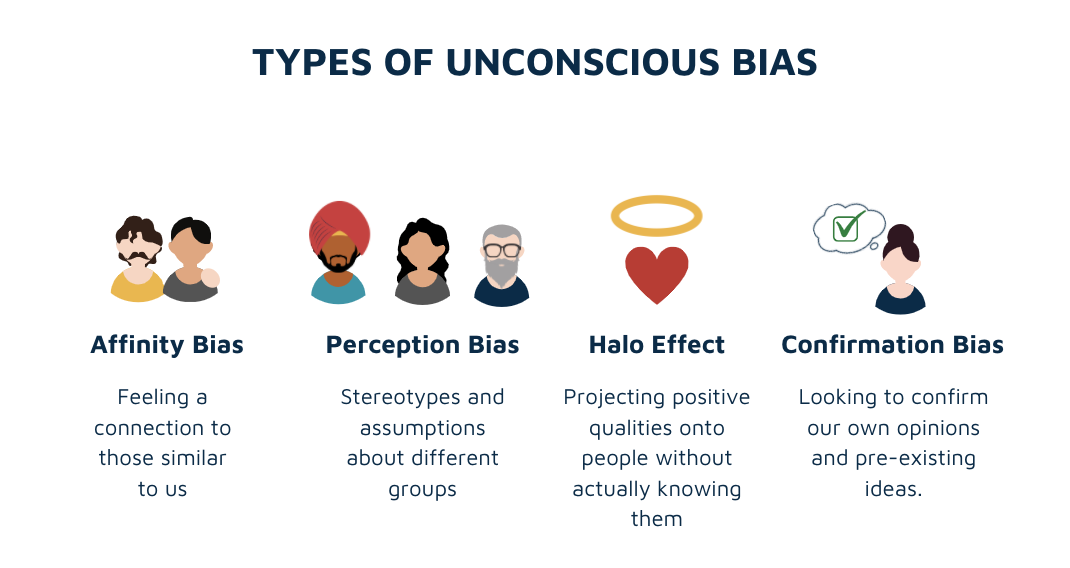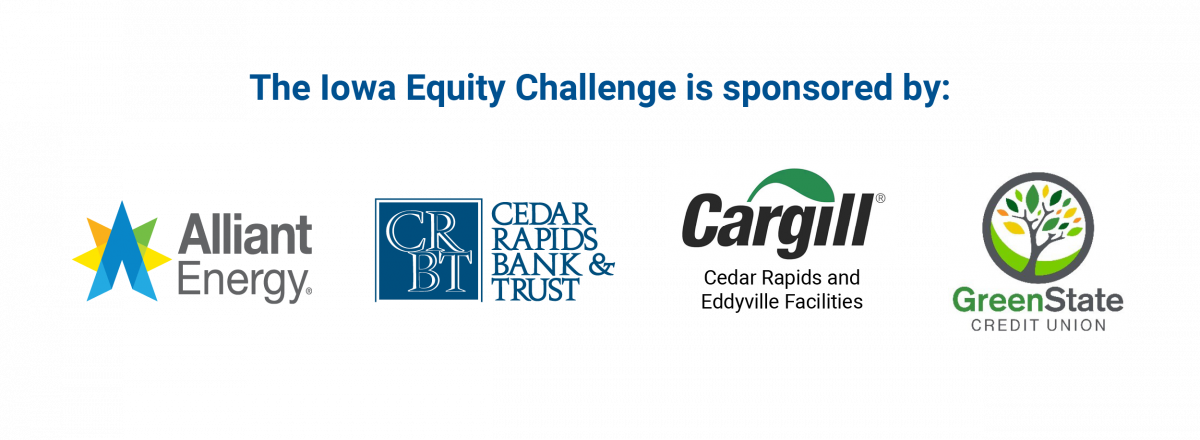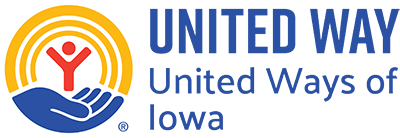Day 4 of 21
IMPLICIT BIAS
We all have bias. From the food we eat to the neighborhoods we choose to the music we listen to, our biases impact the way we live in the world.
Bias is a preference for or against something that affects our actions and decisions. More than individual inclinations, biases are learned behaviors influenced by cultural conditioning.
Some biases are consciously held beliefs (explicit), while others are subconscious (implicit) and out of our control. Implicit bias results from the brain's tendency to process information based on unconscious association and feelings, even when contrary to our declared beliefs.
Although we all have both explicit and implicit biases, the implicit type can be more problematic. They sometimes lead to stereotyping, microaggressions, and prejudice. Developing more self-awareness can help us explore our implicit biases and understand how they shape our behavior.
The graphic below highlights four common types of implicit bias that often affect the workplace, education, health care, and justice systems. Once we recognize the biases we hold, we can strive to actively change the way we think, challenging the negative or harmful preconceptions our culture may have instilled in our brains.

Image Source: BeApplied.com
Learning Objectives
- Define implicit bias and explore different types of bias.
- Understand how implicit bias relates to stereotypes and microaggressions.
- Explore your own implicit biases.
Today's Activities
Choose one or more of these daily activities to learn about today’s topic. Plan to set aside 15 to 30 minutes to complete the activities and journal about your thoughts and feelings.

Read “How Does Implicit Bias Influence Behavior?” (8 min) from Verywell Mind about the causes of unconscious biases, their impacts in various settings, and ways to reduce your own bias.

Watch these short videos from “Who, Me? Biased?” — a collaboration between The New York Times and PBS’ POV series.
- Unscrew the lid on the unfair effects of our subconscious in “Peanut Butter, Jelly, and Racism” (2:26).
- Uncover signs of implicit bias that lurk within our inboxes, our social networks, and the patterns of our daily lives in “Check Our Bias to Wreck Our Bias” (3:00).
- Learn how to build friendships across racial divides to reduce biases in “Make Friends to Tackle Bias” (2:08).

Listen to a “Dispatch in Depth” (21:06) podcast episode about how implicit bias can affect every step of an emergency police call — from the caller to the dispatcher to the responding police officer.

Capture what you learned by writing down your thoughts and feelings about today's content.
- What was your “aha” moment (moment of surprise or new information)?
- Does this information change your perspective?
- How will you use what you learned today to create more equitable spaces?
- What factors influence your implicit biases?
- How might your biases affect how you interact with others? What actions can you take to change your behavior?
Download a free journal page for today.
Additional Resources & Activities
If you would like to dig deeper into this issue, check out these additional resources. We encourage you to revisit this material when you have more time. Feel free to come back to this topic as often as you’d like!
- Explore Project Implicit’s tests, created by psychologists at top universities, to uncover your unconscious biases. Consider taking the race, sexuality, disability, or gender-career test. Be aware that there are challenges with accurately predicting implicit biases based on just one test; however, these assessments can help you become more aware of your biases so you can learn to address them.
- Participate in activities from Breaking the Prejudice Habit, designed to help people identify prejudices they might have, learn about various types of prejudices, and facilitate discussion on overcoming prejudice.
- Through this microaggression activity (10 - 20 min), learn to identify microaggressions and reflect on how you can modify your questions or comments in ways that are less likely to reflect stereotypical assumptions and beliefs.
- Complete the Subtle Prejudice activity (20 - 30 min) to discover how implicit bias, subtle beliefs, and behaviors can affect social interactions in everyday life.
- Screen the movie “Hidden Figures” (2:07:00), the true story of three Black, female mathematicians who worked at NASA during the Space Race in the 1960s. The film shines a light on implicit bias in the workplace and shows how hidden prejudice can hurt us all.
- Read “Implicit Bias Explained” (2 min) from the Perception Institute to learn what implicit bias is, why it matters, and what can be done about it.
- Read “Test Yourself for Hidden Bias” (9 min) from Learning for Justice about the link between bias and behavior and the effects of prejudice and stereotypes.
- Read “Combating Implicit Bias in the Workplace” (4-page report) from the Kirwan Institute for the Study of Race and Ethnicity about interventions to prevent implicit bias from undermining organizational diversity.
- Watch “Let’s Talk Bias” (4:41) from PBS Learning Media, in which five young people share experiences of bias targeted at their unique identities.
- Watch the TED Talk “Creating a Connected Community” (16:52) by Dorice Ramsey, former executive director of the nonprofit Jane Boyd in Cedar Rapids, who shares practical ways to forge connections and create a sense of belonging in the community, despite our differences and biases.
- Watch the TED Talk “How to Overcome Our Biases? Walk Boldly Toward Them” (17:53) by Verna Myers about how to counterbalance bias by connecting with and learning about and from the groups we fear.
- Listen to “Confronting Implicit Biases” (49:35), an episode from PBS’s “The Pulse” podcast, to explore what implicit bias means — what it is, how we can test for it, and what we can do about it.
- Listen to “Does My Child Have Implicit Bias?” (49:35) from Your Parenting Mojo for an overview of implicit bias and how to know if we (and our children) have it.
Share your reflections on today’s topic on social media using the hashtag #IowaEquityChallenge.
Next Topic: Privilege
Did you miss a day? You can find the content for each daily topic on the United Ways of Iowa website. Future topics will be published on the day the email is sent.

